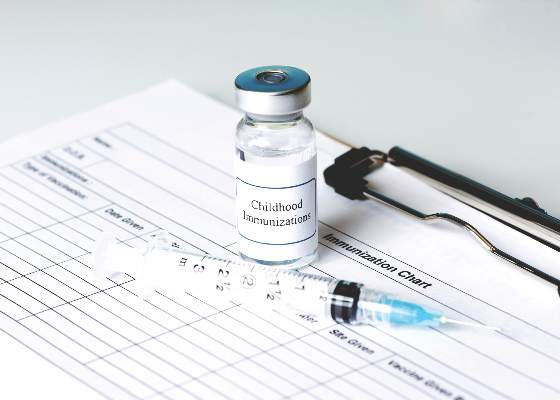FROM PEDIATRIC INFECTIOUS DISEASE JOURNAL
Receiving two doses of a combination tetanus and meningococcal vaccine in infancy did not result in additional protection among children 5 years later, a study found.
Researchers followed up on children receiving one or two doses of the quadrivalent meningococcal serogroups A, C, W, and Y tetanus toxoid conjugate vaccine (MenACWY-TT).
“Overall, 5 years after primary vaccination with MenACWY-TT, there was no clear evidence of benefit of receiving two versus one dose of vaccine in infancy,” reported Dr. Nicola P. Klein of the Kaiser Permanente Vaccine Study Center in Oakland, Calif., and her associates online ( Pediatr Infect Dis J. 2016 Feb 26. doi: 10.1097/INF.0000000000001123 ).
In the initial phase II, open multicenter study, the researchers randomized 349 infants to receive either a single dose of MenACWY-TT at 12 months of age or a first dose of MenACWY-TT at 9 months of age followed by a booster dose at 12 months.
Using a per-protocol analysis, the researchers compared the titers of 186 children at 3 years’ follow-up and 135 children at 5 years’ follow-up. In the group that received one dose, 64%-75% of the children had titers of 8 or higher for MenC, MenW, and MenY 5 years later, compared with 75%-86% of the children who received two doses.
Also at 5 years, MenA titers were 8 or higher in 32% of children receiving one dose and 38% of children receiving two doses. Titers for all serotypes had waned by 5 years after vaccination, but only MenA was low enough that most children were seronegative by 1 year after vaccination. Overall average titers were higher in the group that had received two doses than in the group that had received one.
Dr. Klein’s team also evaluated the immune response and safety of a booster dose of MenACWY-TT to 38 children who had received one dose in infancy and 46 children who had received two doses in infancy, and a primary dose in 100 children of the same age who had never received a meningococcal vaccine. All children receiving the booster dose had antibody titers of 8 or higher against all serotypes 1 month after the dose. Among those receiving the vaccine for the first time, titers were 8 or higher at 1 month in 79% of children for MenA, 86% for MenC, 90% for MenW, and 94% for MenY.
No significant differences existed in terms of average titer levels, vaccine response, or titer levels of greater than or equal to 4 or greater than or equal to 8 between the children who received one dose and the children who received two doses in infancy. Children who received one or two vaccine doses in infancy had higher average titers and more vaccine responses to all serogroups than the children receiving a dose at age 5 years for the first time.
The most common adverse event was pain at the injection site and fatigue within 4 days of vaccination, and no fevers or serious adverse events occurred in any children in this time. Within the month after vaccination, 24% of children who received one dose in infancy, 13% of those who received two, and 29% of children receiving the first dose at age 5 years had at least one adverse event. One child had an upper respiratory tract infection and rash, one had diarrhea and vomiting, and one had Raynaud’s phenomenon within the month after vaccination.
The research was funded by GlaxoSmithKline Biologicals SA. Dr. Miller, Dr. Baine, Dr. Van der Wielen, Dr. Baccarini, and Dr. Kolhe are employees of GSK, and all but Dr. Kolhe and Dr. Klein have restricted shares in GSK. Dr. Miller and Dr. Baine coinvented a patent, which, if granted, will be owned by GSK. Dr. Klein has received research grants from GSK, Sanofi Pasteur, Pfizer, Novartis, Merck, Nuron, and Protein Science, outside the submitted work.


